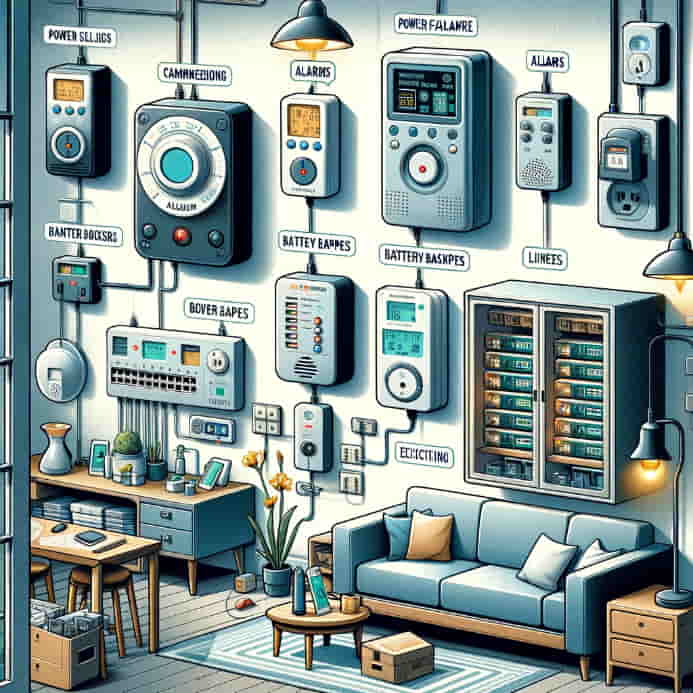Introduction
Power outages can be a common occurrence, disrupting the normal functioning of our homes and causing inconvenience. To mitigate the impact of such events, homeowners often invest in power failure alarm devices. These devices offer a range of features beyond the basic alerting function, providing enhanced capabilities to keep your household running smoothly even during electricity disruptions. In this article, we’ll explore advanced features to consider when choosing a power failure alarm device for your home.
Remote Monitoring and Notifications
One of the key advancements in power failure alarm devices is the ability to monitor your home remotely. Look for devices that allow you to receive real-time notifications on your smartphone or other connected devices. This feature enables you to stay informed about power outages, even when you’re away from home. Remote monitoring ensures that you can take prompt action, whether it’s contacting the utility company or activating backup power sources.
Reputable sources, such as the U.S. Department of Energy, emphasize the importance of timely response during power outages. Remote monitoring not only keeps you informed but also empowers you to make informed decisions to safeguard your home and its inhabitants.
Energy Usage Monitoring
Advanced power failure alarm devices go beyond alerting you about outages; they also provide insights into your energy consumption patterns. Energy usage monitoring features enable homeowners to track their electricity usage over time. By understanding when and where energy is being consumed, you can identify opportunities to reduce your overall consumption and potentially lower your utility bills.
According to studies conducted by the National Renewable Energy Laboratory (NREL), monitoring and managing energy usage can lead to more sustainable and cost-effective practices. Choosing a power failure alarm device with energy usage monitoring enhances your ability to make informed decisions for a more efficient and eco-friendly home.
Battery Backup and Power Management
While basic power failure alarms serve the purpose of alerting you to outages, advanced devices come equipped with built-in battery backup systems. These batteries ensure that the alarm continues to function even when the primary power source is disrupted. Additionally, some devices offer power management features, allowing you to prioritize which appliances or systems receive backup power during an outage.
Reputable sources, such as the Federal Emergency Management Agency (FEMA), stress the importance of having reliable backup power during emergencies. Advanced power failure alarm devices with battery backup and power management contribute to your preparedness for extended outages and emergencies.
Integration with Smart Home Systems
In the era of smart homes, integration with other connected devices is a sought-after feature. Advanced power failure alarm devices often offer compatibility with smart home systems, enabling seamless integration with other smart devices, such as thermostats, security systems, and lighting controls.
Studies by the International Energy Agency (IEA) highlight the potential benefits of interconnected smart home systems in improving overall energy efficiency. Opting for a power failure alarm device that integrates with your smart home ecosystem enhances the overall efficiency and convenience of managing your home during power outages.
Temperature and Humidity Monitoring
Beyond power-related alerts, some advanced devices also incorporate sensors to monitor temperature and humidity levels in your home. This feature is particularly beneficial if you have sensitive equipment, pets, or plants that require specific environmental conditions.
Research published in the Journal of Applied Poultry Research underscores the importance of monitoring temperature and humidity for the well-being of animals. Choosing a power failure alarm device with these additional sensors ensures that you can take preventive measures to protect your belongings and maintain a comfortable environment for occupants.
Conclusion
Investing in a power failure alarm device with advanced features goes beyond basic outage notification, offering a comprehensive solution to safeguard your home. Remote monitoring, energy usage tracking, battery backup, smart home integration, and environmental sensors are key features to consider. By staying informed and utilizing these advanced capabilities, homeowners can not only mitigate the impact of power outages but also contribute to a more energy-efficient and resilient household.
Ensure you explore reputable sources such as the U.S. Department of Energy, the National Renewable Energy Laboratory, FEMA, and the International Energy Agency for further insights into the importance of advanced features in power failure alarm devices. Making an informed choice will empower you to create a more resilient and efficient home environment for you and your family.

Leave a Reply